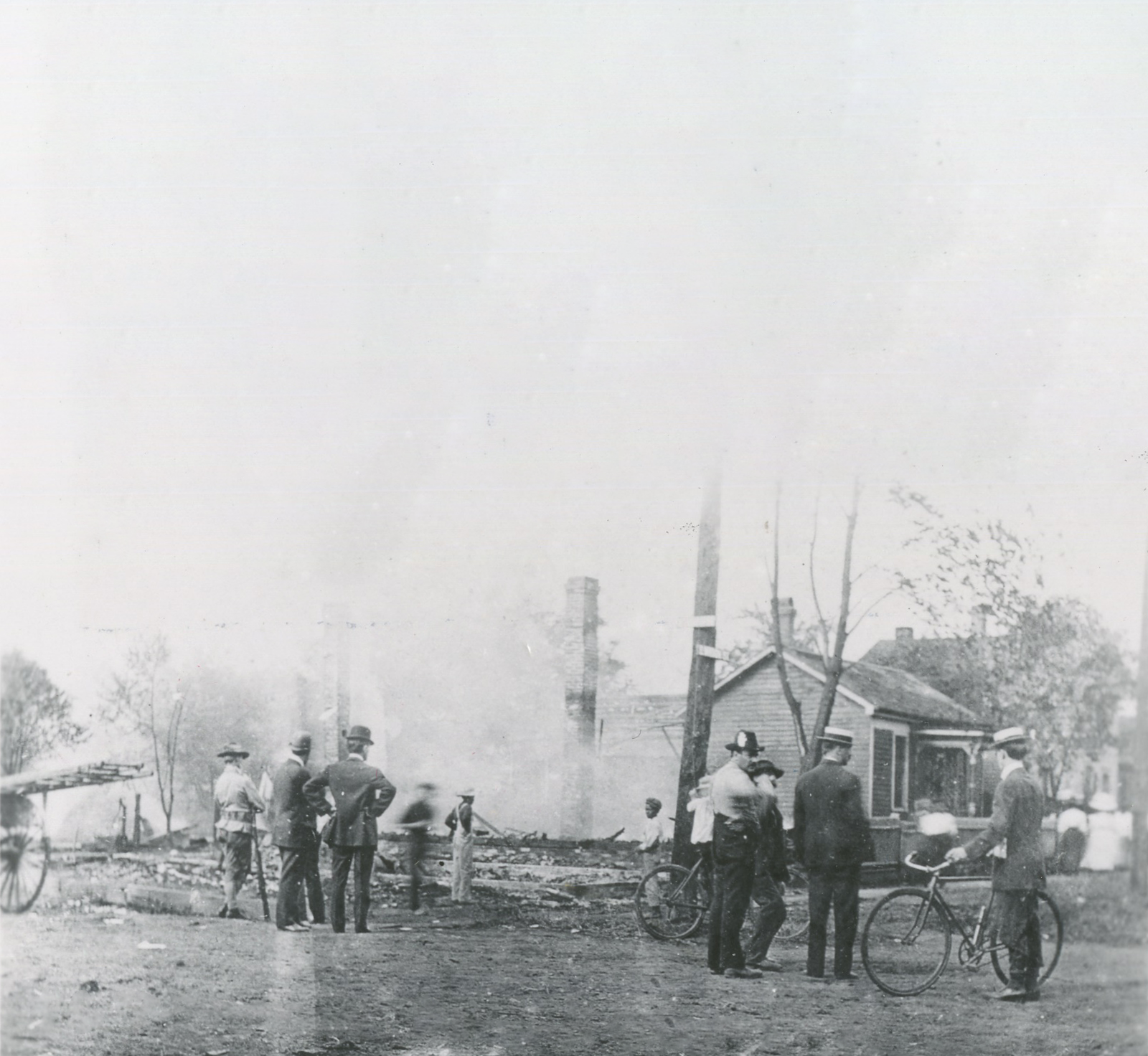News Release

Courtesy of the Cities and Towns collection, Abraham Lincoln Presidential Library and Museum
News Release Date: June 13, 2023
Contact: NewsMedia@nps.gov
WASHINGTON– The National Park Service (NPS) today delivered the 1908 Springfield Race Riot Special Resource Study to Congress. The Special Resource Study evaluated the Archeological Site near Madison Street and the 10th Street Rail Corridor and other sites associated with the 1908 Springfield Race Riot in the state of Illinois. NPS completed its evaluation and determined that the Archeological Site associated with the Springfield Race Riot study area meets all four criteria necessary to be considered eligible for inclusion in the National Park System.
On August 14, 1908, African Americans were targeted and victimized by mass racial violence near Madison Street and 10th Street in Springfield, Illinois. That event was a catalyst for the formation of the National Association for the Advancement of Colored People (NAACP).
“The 1908 Springfield Race Riot was a pivotal moment in our nation’s history,” said NPS Director Chuck Sams. “That day of horrific antiblack violence resulted in a call to action and spurred a movement dedicated to fighting for civil rights. Preserving and commemorating this site would contribute to the National Park Service's commitment to recognizing the Civil Rights Movement in the US and the sacrifices made by those who fought against discrimination and segregation.”
Director Sams visited the Springfield Race Riot site in 2022 soon after the NPS initiated the special resource study.
The 1908 Springfield Race Riot Study Act of 2020 (Public Law 116-139) directed the Secretary of the Interior to conduct a special resource study of the site. A potential site is evaluated according to four congressionally established criteria: national significance, suitability, feasibility and the need for NPS management. All four criteria must have positive findings for the special resources study to identify a site as eligible for potential inclusion in the National Park System. Ultimately, parks in the National Park System are designated by acts of Congress, or through a presidential proclamation. Because the study is not a decision-making document, it does not identify a preferred NPS course of action.
The study examined the remains of homes burned during the 1908 Springfield Race Riot and other sites and buildings around Springfield that played an important role in the riot and its aftermath. The study identified two management options for consideration: a smaller and a larger boundary in which the NPS could manage the site, protect resources and provide opportunities for visitors. There is potential for partnerships that may provide opportunities and additional visitor services. The larger boundary would likely be the most effective and efficient option and allow for the site to be managed in collaboration with a robust group of partners. In this case, the expanded area would allow for a wider range of visitor experiences and services.
In accordance with applicable laws and policies, the NPS, in partnership with the Springfield NAACP, the City of Springfield, and Hospital Sisters Health System, shared information with the public about the study throughout the process and collected information that informed the findings of the study. Extensive and positive feedback from the public, key stakeholders, and political leaders for the study helped to inform the NPS’s evaluation of the study criteria and its findings.
About the National Park Service. More than 20,000 National Park Service employees care for America's 424 national parks and work with communities across the nation to help preserve local history and create close-to-home recreational opportunities. Learn more at www.nps.gov, and on Facebook, Instagram, Twitter, and YouTube.
Last updated: June 13, 2023
